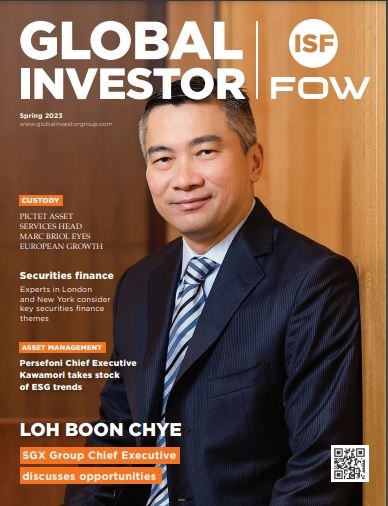Mizuho Bank: Growth from good governance
Soon after Japan’s prime minister, Shinzo Abe won a landslide victory in December’s parliamentary election, the exposure draft of Japan’s first ever corporate governance code was released for public comment.
Back in August last year, Financial Services Agency of Japan (JFSA) and the
Tokyo Stock Exchange (TSE) jointly announced the establishment of the Council
of Experts Concerning the Corporate Governance Code pursuant to the timeline
set forth in the Revised Japan Revitalisation Strategy, approved by the former
Abe Cabinet in June 2014.
The cabinet set a target to put the code into effect by June
2015, the next annual general meeting (AGM) season in Japan. It is interesting
to go into the details of the full scripts of the eight meetings held by the
council, gradually posted on JFSA website, to read between the lines of the
exposure draft and understand the sincere efforts of the council members to
achieve growth through good corporate governance.
According to data compiled by the World Federation of
Exchanges, the total market capitalisation of the New York Stock Exchange and
the London Stock Exchange increased more than fivefold between 1990 and 2013,
while the Tokyo Stock Exchange grew by only 50% during the same period. The
number of Japanese companies in the Fortune 500 decreased from 148 to 57
between 1995 and 2014.
Yes, the Japanese economy has been increasingly slow for more than two decades and something needs to be done. But why did the cabinet decide to include a corporate governance code as one of the tools to exit deflation and to achieve sustainable growth?
The word code is often associated
with restriction, so a corporate governance code sounds like a tool to tie the
hands of CEOs, for risk reduction or prevention of misconduct, potentially
slowing down the decision-making process of corporate executives by giving additional
burden.
So, what is the logic? The chairman of the council made an analogy with “the north wind” and “the sun” in one meeting on this point. Although the code may be regarded as the north wind by many corporate executives, it is intended to be the sun by forming a safe haven for executives to make bold business judgments through its framework, such as increased transparency based on detailed information disclosures and rigid monitoring by independent directors and others.
The preamble of the exposure draft uses the
phrase “aggressive governance” as the goal of the code, arguably showing the
strong will of the drafters of the code to signal to the readers that the code
is to be in place for supporting corporate executives to demonstrate their
healthy entrepreneurship spirit.
Research of Booz & Company revealed 97% of CEOs of
Japanese companies are promoted from within, surviving the extremely careful
and lengthy, sometimes more than 30 years of internal selection process with no
significant “mistake” under the unique lifetime employment system of Japan.
Some argue that such a screening process may often result in the appointment of
habitually defensive and risk-averse CEOs who are not accustomed to
performancelinked pay.
This globally peculiar Japanese executive appointment system might be one of the reasons that the drafters stressed “aggressive governance” by stimulating the “healthy entrepreneurship spirit” to strengthen the earning power of Japanese listed companies to reward shareholders with reasonable investment returns.
Based on this, the draft code defined “corporate
governance” as a framework in which companies can make transparent, fair,
prompt and bold decisions, taking into account the standpoints of shareholders,
customers, employees, and the local community.
Global standards and domestic reality
The revitalisation strategy of the Abe cabinet also required the code to be based on the OECD Principles of Corporate Governance amended and released in 2004 “to meet the international standard”, but also asked for the code “to be aligned with the reality of Japanese companies”.
The council members split over the interpretation of this
phrase depending on their standpoints, and had rather heated and active
discussions. Some argued that this requirement would be challenging because a
code that would meet international standards might not match the actual
conditions surrounding Japanese companies.
A member representing an institutional investor countered that too much consideration on corporate practices might have resulted in the current low profit margins of Japanese corporations.
Another member representing a nonprofit organisation focusing on corporate governance emphasised the necessity of drastic reform to overcome various issues that Japanese companies were facing, such as low productivity, diminishing competitiveness, low return on equity, and excessive retained earnings.
A
member from a major law firm took the view that this phrase might allow each
company wiggle room to differentiate their corporate strategy for regaining
earning power.
The solution to the issue was the principle- based, “comply
or explain” approach as the Japanese version of the stewardship code that came
into effect earlier in 2014, permitting each company to decide whether to adopt
the principles in light of the actual circumstances in which the company was
placed.
Of course, when a company chooses not to comply with any of the principles set forth in the code, the company must provide sufficient explanation to stakeholders, including shareholders, for non-compliance.
However, the drafters made it clear in the preamble that noncompliance to any
of the principles did not in itself automatically mean the corporate governance
of the company was ineffective. This is because many of the council members
repeatedly expressed their concerns in a series of meetings on the potential
risk of misunderstanding by stakeholders about the comply-or-explain – or
soft-law – mechanism.
On the other hand, the same section provides the caveat to companies that superficial “template-like” explanations would not satisfy the policy behind the comply-orexplain approach, thus being insufficient as an explanation for non-compliance.
The code was drafted to substantially follow
the gist of the OECD principles as required in the Abe cabinet’s growth
strategy to achieve the level of international standards, having four
principles after the OECD principles and one additional principle concerning
dialogue with shareholders, to make sure the code was inseparably linked to the
stewardship code that covers shareholders.
The five principles are as follows:
1 Ensuring the rights and equitable treatment of
shareholders.
2 Appropriate cooperation with stakeholders other than
shareholders.
3 Appropriate information disclosure and ensuring
transparency.
4 Responsibilities of the board of directors and other
corporate governing bodies.
5 Dialogue with shareholders.
How the code works for shareholders
The purpose of satisfying the global corporate governance
standard is obviously to “attract long-term ‘patient’ capital” from
international investors across the world. When drafting the principles,
especially principles 1 and 3, the council members gave much thought on
non-Japanese investors who hold approximately 30% of Japanese stocks.
Several barriers that may have detrimental effects on the equitable treatment of foreign shareholders were raised – the concentration of AGMs, the relatively short notice of AGMs – especially for investors abroad due to the use of postal mail – and disclosures being made in Japanese.
Extensive
discussions between the council members resulted in the code covering all the
above issues to some extent, encouraging listed companies to create an
international investor-friendly environment.
In an effort to lower the hurdles for non- Japanese
investors, the draft code sets forth the electronic release of the AGM notices
over TDNet or their websites as a best practice, enabling investors to access
the notice at the time of the decision to hold the AGM and prior to the
dispatch of notices. Also, the draft code recommends listed companies use
electronic voting platforms, and to prepare an English language version of the
notice of the AGM, depending on the ownership ratio of local institutional
investors and foreign investors.
On the other hand, the issue of the timeline for AGMs, to solve the AGM concentration issue, is still left open for public comments at the release of the draft. The shorter the period between the record date and the AGM the better, while the longer the period between the AGM notice and the AGM the better.
Enough time should be saved for an audit from the fiscal
yearend, but if the AGM is delayed more than four months beyond the financial
yearend, then the period between year-end and AGM may become too long. A
representative from a listed company highlighted the difficulties in balancing
the various elements relating to the AGM timeline, including the Companies Act,
the tax framework, and the fair audit process.
The code will apply to the companies listed on TSE first and
second sections. If the code is enforced substantially in line with the
exposure draft, those companies should comply with the principles or put
forward either a plan with a clear timeline for compliance or reasons for
non-compliance.
Based on the council’s discussions, the draft code allowed listed companies to implement the corporate governance framework required under the code over a period of time. However, the code will become effective on June 1 2015. Listed companies are likely to spend a busy first five months of 2015 keeping pace with Abe.
Information contained herein is derived from sources believed to be
reliable. While due care has been exercised in preparing this information,
Mizuho Bank Ltd makes no warranty, expressed or implied, regarding the
accuracy, completeness or usefulness of this information, and Mizuho Bank Ltd
assumes no liability with respect to consequences relying on this information
for investment or any other purposes.
Found this useful?
Take a complimentary trial of the FOW Marketing Intelligence Platform – the comprehensive source of news and analysis across the buy- and sell- side.
Gain access to:
- A single source of in-depth news, insight and analysis across Asset Management, Securities Finance, Custody, Fund Services and Derivatives
- Our interactive database, optimized to enable you to summarise data and build graphs outlining market activity
- Exclusive whitepapers, supplements and industry analysis curated and published by Futures & Options World
- Breaking news, daily and weekly alerts on the markets most relevant to you



